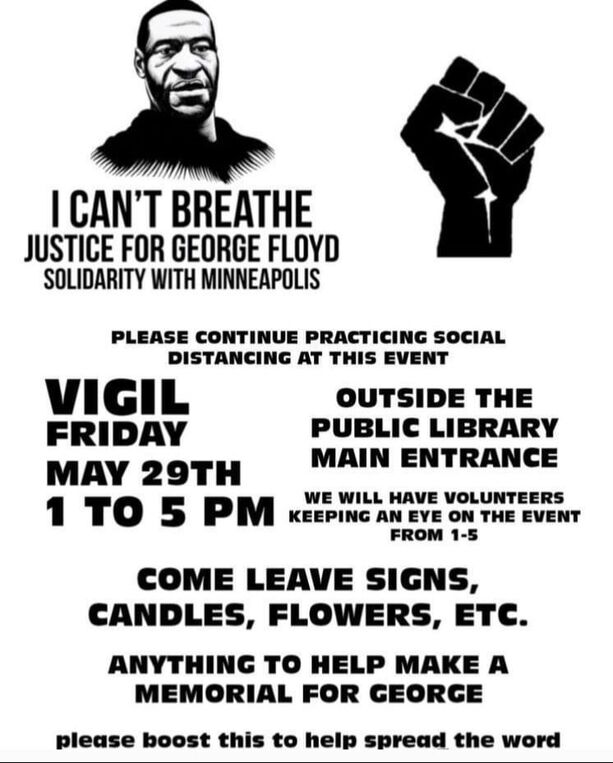|
Author: Marii Herlinger, WPJC Intern
Too often, the topic of war is framed as either a thing of the past or as a primal activity only afflicting “underdeveloped” countries in places far away. Both of these assumptions are inaccurate. Worse, they perpetuate dangerous illusions of “safety” and “security” at home, while deflecting accountability from superpowers—like the United States—responsible for waging war on so many places. It is no accident how many people think of the military as a distinct and separate entity from their everyday lives. This veil we are under is a result of a grossly manipulated narrative(1) about what America needs defense against—and it has grave consequences.
In 2014, police in Watertown, Connecticut purchased a mine-resistant, ambush-protected (MRAP) vehicle with a retail price of $733,000 at the meager cost of $2,800. My sister bought her first used car at that price. And yet, a landmine has never been found in Watertown.(2) Police forces in every state have the ability to procure such items through the 1033 program—or what the government so dreamily calls the Pentagon's Law Enforcement Support Office.(3) The 1033 program enables the Pentagon to distribute military equipment to local police departments per request. Items procured through the 1033 program are not released to the public, nor are the names of the agencies requesting them. The 1033 program is far from the only example of at-home militarism. Police departments have long prioritized military veterans in their hiring processes, a practice which the Community Oriented Policing Services (COPS) program of the Department of Justice openly permits.(4) Programs like COPS are bolstered by the guise that the military is our “great protector.” They assume that ordinary citizens will not think to challenge the notion of military training as helpful or necessary in law enforcement. The questions we need to be asking are: what kind of threats does the government foresee needing combat-trained officers for? What many atrocities could result from hiring officers with war PTSD? How can we address veteran unemployment without creating a funnel from the military to law enforcement? Programs like COPS fuel the narrative that a militaristic approach proves useful in domestic conflicts. As we are reminded from the long list of lives stolen and communities broken from police brutality, violence is never the solution. Other examples of militarism at home: the construction of military bases often dislocates entire communities(5), forcing them to leave the land where they once lived, danced, cooked, made homes, raised their babies, and laid their heads at night. Prisons, jails, immigrant detention centers, federal agencies like Immigration and Customs Enforcement (ICE) and other structures of state violence perpetuate America’s long legacy of family separation and xenophobia. Bureaucratic complexities and high exposure criteria still bar so many downwinders (a term for those who live downwind of nuclear test sites and are thus subject to radioactive fallout) from receiving compensation. And, in the middle of a pandemic which has exposed the inadequacy of the American healthcare system, the Pentagon chooses to “honor” healthcare workers by authorizing expensive military flyovers. Meanwhile, the shortage of PPE in healthcare facilities is such that some hospitals have prohibited their workers from bringing their own masks since they cannot be guaranteed for everyone.(6) This is a serious misplacement of priorities. How about honoring healthcare workers by supplying PPE and tests? How about replacing prisons and jails with life-affirming institutions? How about not creating populations of downwinders in the first place? How about severing the flow of equipment from the military to police agencies? How about creating a system of restorative justice that centers the needs of survivors of harm and prioritizes the health of the human body and spirit?
When I refer to “the militarization of our lives,” I’m talking about how photographs of the 2014 protests in Ferguson, Missouri, could be mistaken for war zones. I’m talking about the reality that in far too many neighborhoods across America, kids can look out their windows and see tanks rolling down the street. I’m talking about the fact that the police can acquire MRAPs, combat gear, and military-grade equipment as if they are on sale at the mall.
We need a narrative shift and we need it now. The antiwar movement must include the constant acknowledgment that war abroad is inherently linked to war at home. Without active resistance to both, violence will continue to inform government responses to conflict across the globe and in our very backyards. Here are some upcoming actions steps you can take to help fight militarism at home!
1https://www.dictionary.com/e/misinformation-vs-disinformation-get-informed-on-the-difference/
2 https://www.newsweek.com/how-americas-police-became-army-1033-program-264537 3 https://www.npr.org/2014/09/02/342494225/mraps-and-bayonets-what-we-know-about-the-pentagons-1033-program 4 https://www.afsc.org/blogs/news-and-commentary/afscs-new-demil-school-chicago-youth-connect-militarism-home-and-abroad 5https://www.culturalsurvival.org/news/chagossians-original-inhabitants-diego-garcia-face-us-government-court 6https://www.npr.org/2020/04/02/825200206/doctors-say-hospitals-are-stopping-them-from-wearing-masks |
Contributors
We invite the WPJC community to contribute fact-checked submissions on local, national and global current events. Linking to original sources and articles is required. Submissions may be sent to [email protected] for review. Categories
All
Archives
May 2024
|



 RSS Feed
RSS Feed